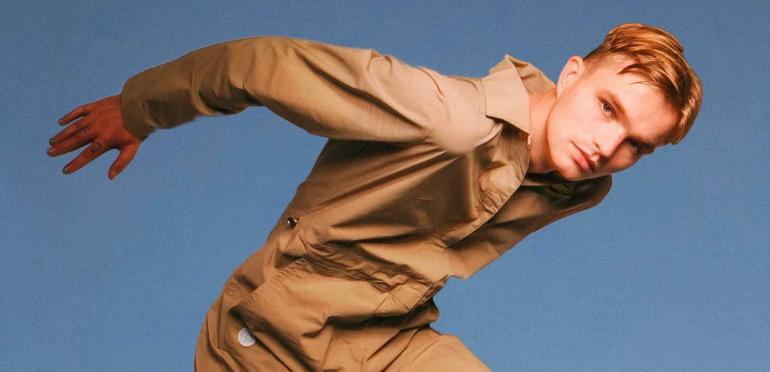The 20th edition of the Het Grote Vogelweekend van Natuurpunt has come to an end and according to provisional figures, 47,237 enthusiasts have counted the garden birds in Flanders. 805,501 birds have been counted in 25,403 farms. On average, bird counters see 24 birds of 7 species per orchard, slightly more than last year. The top 3 are: house sparrow, great tit and chaffinch, same as last year. The Blackbird continued to sink and even disappeared from the top 10 in Flemish Brabant.
“We are very curious about the number of blackbirds after there was a new outbreak of the usutu virus last year. Unfortunately, we have to conclude that its presence in our gardens is steadily declining. For the first time, it is no longer in the top 10 in the Flemish province of Brabant. In the Flemish top 10 he fell to 8th place. For the first time blackbirds were observed in less than 70% of the park counted. Between 2000 and 2010 it was in 3rd or 4th place and is still present in more than 90% of farms counted,” said Gerald Driessens, ornithologist at Natuurpunt. The house sparrow may be number one, but their numbers have declined over the years. 20 years ago sparrows were in more than 60% of gardens, now less than 50%.
On average 24 birds of 7 species were seen in our gardens, in 2022 there were 23 birds of 7 species. The tally is still coming in, but with 47,237 bird counters, both in schools and at home, it looks like we will reach the same number of counters as in 2022. Garden bird counts don’t necessarily say anything about population trends in individual species on a national or international scale. Europe, though the shifts are often similar. We only measure how many birds come to our garden at the time of counting. These are always subject to the same factors: weather and natural food availability, which the situation here and in their breeding grounds can play a role in.
Fewer birds from the far North.
Due to the mild winters, not many winter birds come to our garden. We mainly rely on resident birds that roam year-round and winter birds that feel attracted to our gardens: think tits, robins, and finches. While the increase in crows appears to have been stagnant, the wood dove appears to be steadily increasing. In further analysis of the quarter numbers alone, we’ll see how the numbers actually relate.
Like last year, we haven’t seen any notable invasion of wintering birds from the north in recent months. “In the final report we will pay extra attention to the decline of the blackbird, but also the fate of the greenfinch, which was bored by the impact of Trichomonas gallinae (also known as ‘the Yellow’),” says Gerald Driessens. This parasitic disease should make us constantly aware that we have a responsibility to keep the dining area hygienic enough: so that no excess seeds last a long time and greatly increase the chances of germs. “We also wanted to know how the gradual decline of the Collared Dove is playing out geographically. We are now seeing about 35% fewer of these pigeons in the garden compared to 2006-2008”. The putter, a species with no ambitions for the top 10, is at the back of the rankings but continues to show himself in a positive light.
Our birds and gardens
Together we can create additional assets for birds and nature with our garden designs, as they cover 12% of the Flemish surface. The more natural design ensures that garden birds not only visit to feed, but also to breed and raise their offspring. Other animal species can also benefit from this, such as porcupines. Even if you don’t have a garden, sparrows, starlings, or wall fast boxes can make all the difference locally for the species.
Big Bird Weekend.
The Big Bird Weekend is Natuurpunt’s biggest public campaign and the count is still on its way. With Het Grote Vogelweekend, Natuurpunt wants to collect data about our garden birds. With professional biologists, it would be impossible to collect so much data. At the same time, Natuurpunt wants to awaken people to the beauty that can be found in our nature, but also in our gardens. We also want to further encourage them to continue to feed and help the birds in a responsible way, especially during the winter months but also during the breeding season. Natuurpunt would like to thank all of our counters and our park’s bird ambassador Tine Embrechts for their enthusiasm and assistance with this count. Final results will be published in a more detailed report at the end of February.
Top 10 in Flanders (in brackets 2022 ranking):
- house sparrow (1)
- big boobs (2)
- tick (3)
- Wood Pigeon (5)
- Chew (6)
- Blue Chest (4)
- Turkey Pigeon (8)
- blackbird (7)
- Magpies (9)
- robin (-)
Counting was also carried out in the Netherlands and England last weekend. In the Netherlands, the temporary big three are: house sparrow, great tit and blue tit
Bird Counting Week for Schools
During Bird Counting Week for Schools, which took place from January 23 to 27, 4806 students from 245 classes jointly counted more than 12,793 birds. At the Flemish playground, the black raven outperformed the crow of the year and was the winner. In previous years, the raven had been the most calculated bird on the Flemish playground eight times in a row. With the crow at number 2 and the wood dove at number 3, the stage species remains the same here.
In the Flemish province of Brabant, 127,210 birds were counted by 7,012 counters in 4,074 gardens. There are an average of 23 birds of 7 different species per farm. House sparrow, great tit and chaffinch now fill the top 3 positions. So places 2 and 3 swap places. And it hurts: Blackbird is leaving the top 10 provinces here for the first time, even if it’s only temporarily. But who would have thought that this might have happened 10 years ago… Last year he ranked 8th
place. The Collared Dove returned to 10th place after a short absence.
Flemish Brabant province top 10 (between brackets de 2022 ranking):
- house sparrow (1)
- Big tits (3)
- tick (2)
- Blue Chest (4)
- Wood Pigeon (5)
- Magpies (6)
- Chew (7)
- Starling (9)
- black raven (10)
- Collared Pigeon (-)
In the Brussels Capital Region, a total of 221 participants in 131 gardens totaling 2,576 birds. There are an average of 14 birds of 5 different species per farm, meaning both numbers have dropped by one unit. House sparrows, great tits and wood doves are now top 3 in Brussels. The exotic ring-necked parakeet soon moved from 10th to 6th position and is now present in about 1 in 3 parks. The hedgehog sparrow crept into the top 10 and the black crow left the series.
Top 10 Provinces in the Brussels Capital Region (among brackets the 2022 ranking):
- House sparrow (2)
- Big tits (1)
- Wood Pigeon (3)
- Blue Chest (4)
- Magpies (6)
- Rose Ringed Parakeet (10)
- Check (5)
- blackbird (7)
- Starling (9)
- Heggenmus (-) (Red-Ringed Parakeet)
You can submit your details by Friday via www.vogelweekend.be

“Falls down a lot. General tv buff. Incurable zombie fan. Subtly charming problem solver. Amateur explorer.”







